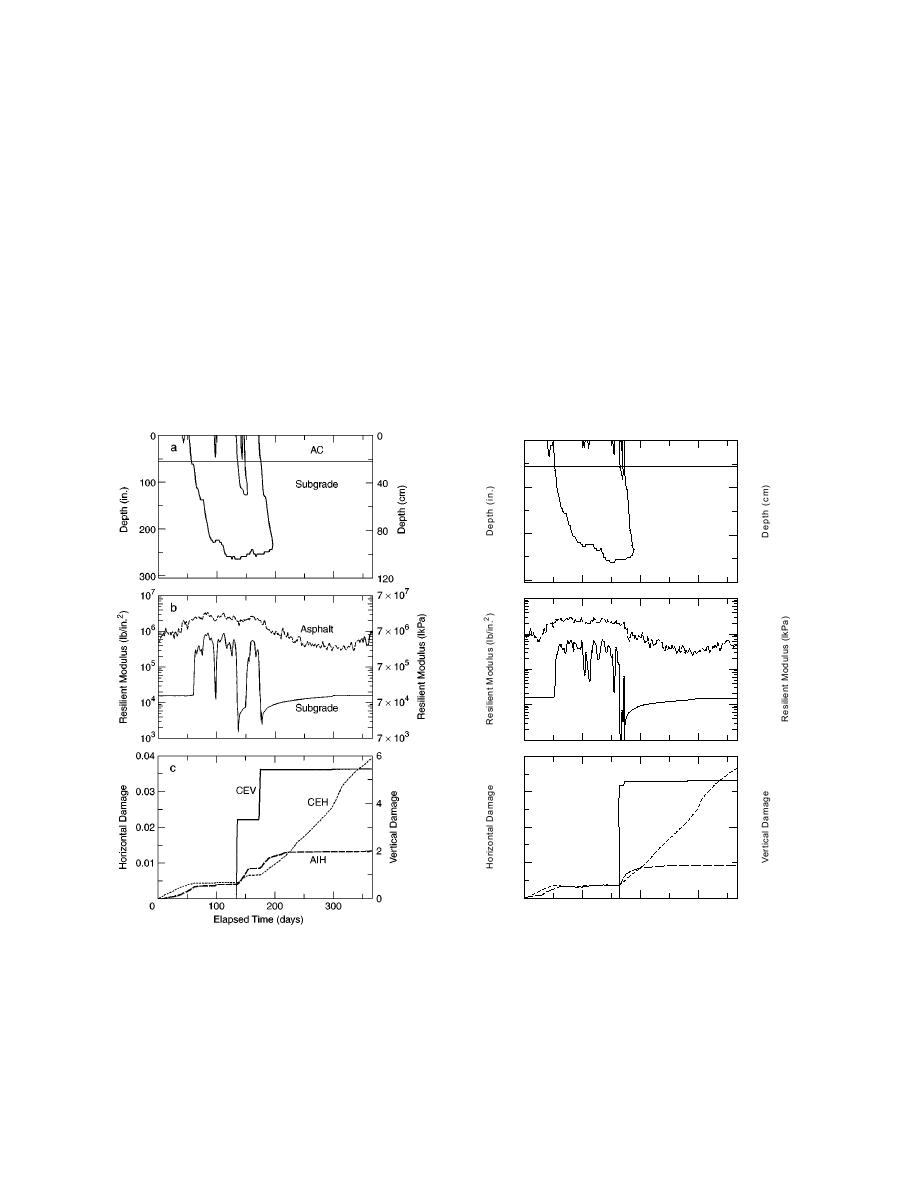
conditions are constant, there was more damage
from the other models did not correlate with any
related to vertical strain in the full-depth design.
of the above parameters.
When frost did not penetrate the subgrade in the
It was noted that two similarly categorized sea-
conventional design, essentially no vertical strain
sons, 198384 and 198586, which had nearly
damage was predicted.
identical freezing indexes and water table depths,
Freeze season characteristics were initially
as well as the same number of freeze thaw events,
quantified by analyzing the total freezing index,
had diversely different damage predictions in the
the number of times that frost was predicted to
full-depth section (Table 17a). A large thaw event
enter the subgrade and the maximum depth of
in the middle of the 19831984 freeze season was
frost penetration beneath the top of the subgrade
accompanied by severe weakening of the subgrade
(Table 17). Lower amounts of damage (higher
both during midwinter and spring thaw, which
applications to failure) were predicted by the As-
resulted in a considerable amount of predicted
phalt Institute horizontal strain model in seasons
damage (Fig. 18). The 198586 year experienced
with higher freezing indices and deeper frost pen-
a nearly continuous freeze season with no signifi-
etration in both the full-depth and conventional
cant midwinter thaw event (Fig. 19). As a result,
cross sections. However, predictions of damage
the subgrade modulus underwent thaw weakening
0
0
a
AC
100
40
Subgrade
200
80
300
120
7
7
7 10
10
b
106
7 106
Asphalt
105
7 105
Subgrade
4
7 104
10
103
3
7 10
0.04
1.0
c
0.03
CEV
CEH
0.02
0.5
0.01
AIH
0
0
100
200
300
Elapsed Time (days)
Figure 18. Predicted results from simulation of
Figure 19. Predicted results from simulation of
full-depth section during freeze season 1983
full-depth section during freeze season 1985
1984, starting on 1 October. a) Frost/thaw depth,
1986, starting on 1 October. a) Frost/thaw depth,
b) seed resilient modulus passed to NELAPAV,
b) seed resilient modulus passed to NELAPAV,
and c) cumulative damage. (Abbreviations--see
and c) cumulative damage (see Table 17).
Table 17.).
31



 Previous Page
Previous Page
